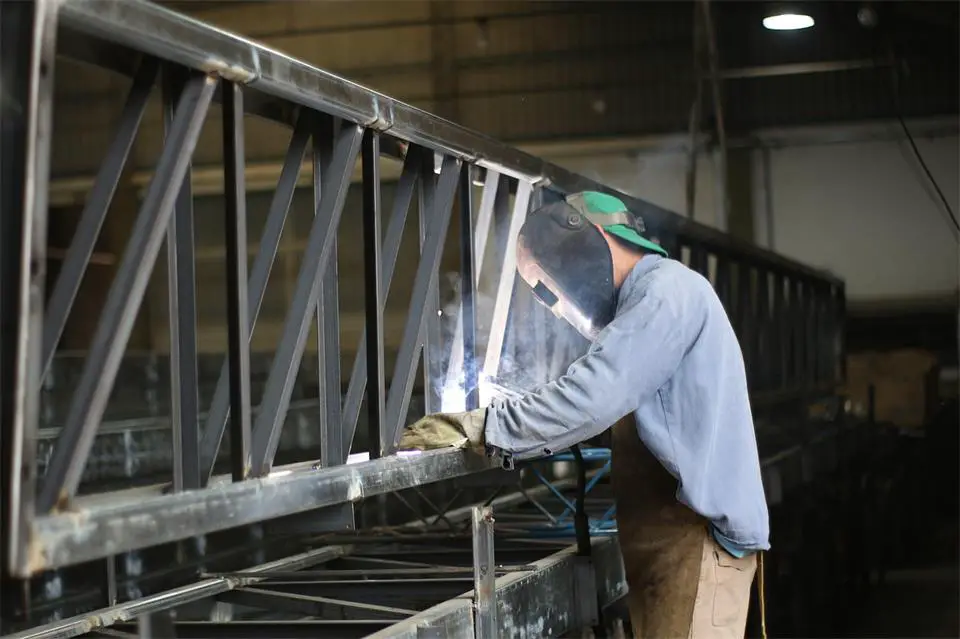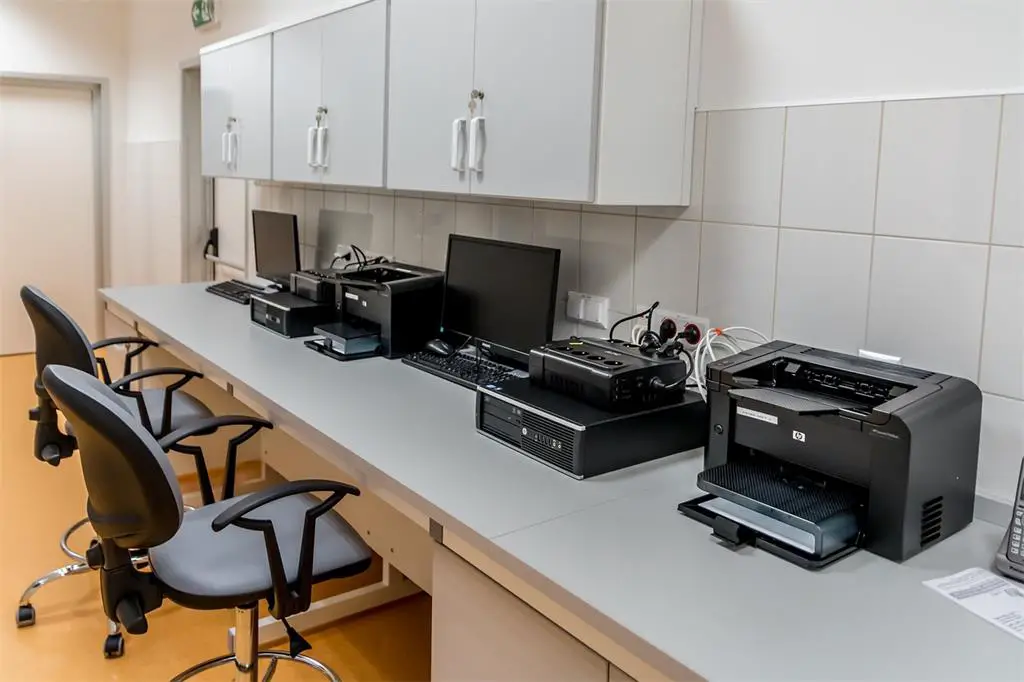Business
16 Pros and Cons of Social Media That Will Affect Your Business Growth


I grew up in a world that is known for making leaps in technological advances and hailing with the benefits of social media. Today from fun and excitement to learning and making business deals, everything is done through social media platforms.
It has become imperative for everyone to be active on social media to ensure success. The last two decades are proof of the influential impact of digital networks on individuals, societies, and businesses.
The simple definition of social media is that it comprises of websites and applications that allow user participation, creating and sharing user-generated content.
To take advantage of a fast, inexpensive, and efficient way to connect with the global audience, let’s dive in and discuss the pros and cons of social media to engage and expand your growth.
A Brief History of Social Media
Do you know that “Six Degrees” was the first social media site founded by Andrew Weinreich in 1997?
Today social media channels are growing at an exponential rate. Facebook is considered the top-ranked social media network. This all does not happen overnight.
Daily we spent almost 135 minutes using Facebook, Twitter, Instagram, or WhatsApp. We can’t imagine our lives without them.
From Six Degrees to Facebook, the last two decades have introduced people to Friendster by Peter Chin, Jonathan Abrams, Dave Lee in 2002, LinkedIn to connect businesses in 2003, Facebook by Mark Zuckerberg in 2004, YouTube in 2005, 2006 boomed with Myspace, 2010 with Twitter and 2011 with Snapchat, the sensation of every teenager.
The list goes on, but Facebook remains irreplaceable with 2.38 billion monthly active users and bold changes to the platform.
What Are the Different Types of Social Media?
Being a social media pro, you must be well aware of social media networks, sharing sites and also about Pinterest and Google Plus. But there is much more to know about making the right choice of platform for social presence to seize opportunities.
To assist you in selection of appropriate platforms, this post will serve as your guide about various prominent kinds of social media and examples under each category.
1. Major social networking platforms
- Facebook – 38 billion active users
- Twitter – 126 million daily active users
- LinkedIn – Over 500 million users
2. Media sharing networks
- Instagram – More than 500 million daily active users
- YouTube – Over 1.9 billion monthly active users
- Pinterest – 250 million active users
- Snapchat – 190 daily active users
3. Social blogging networks
- Tumblr
- Medium
- WordPress
4. Discussion forums
- Quora
- Digg
5. Consumer review networks
- TripAdvisor
- Zomato
- Yelp
6. Social shopping networks
- Fancy
- Polyvore
- Etsy
“I use social media as an idea generator, trend mapper and strategic compass for all of our online business ventures.”
— Paul Barron
8 Advantages of Social Media
Social media can connect you with more than 3 billion people across the globe. Undoubtedly it is the modern-day genie of this digitally revolutionized world to help you engage and expand.
These top 8 benefits will help you understand why social media presence is a must for success.
1. Brand Awareness
Social networking websites are the commanding tools to boost business visibility. It gives a profitable and stress-free digital marketing by networking and targeting your potential customers.
You can see significant improvement in your brand visibility and user experience by spending a few hours on social media weekly. It will monetize your brand and place you on top.
2. Economic Strategy
Are you looking for cost-effective marketing strategies?
If you are nodding your head in affirmation, then social media platforms are the best place for devising a beneficial action plan. Many platforms allow users to create a free account.
You can save your money for utilizing on paid promotions across various platforms to bag conversion rates.
3. Clients Engagement
Use social media for regular interaction with your customers. Effective communication leads to profitable results. Humanize your brand and convey its message to the masses.
Listen to their demands, know their needs and build long term relationships with your customers. Moreover, utilize social platforms to actively respond to their queries and win their confidence.
4. Improved Customer Satisfaction
Social networking sites are the voice of your business. They play a vital role in creating a better image of your brand. The way you handle your customers promptly, it helps to accomplish customer satisfaction.
Instead of giving built-in answers for their queries, take some time to give personally composed replies for leaving positive effects on them to excel in customer service.
5. Market Awareness
Be mindful of your market and keep an eye on your competitors. In case they are sloping up their content generation, alter your policy to make some buzz.
Try to be one step ahead than your competition to gauge the nerve of the buyers. Social media is potent in grabbing a substantial number of followers to counteract the contest of being the best.
6. Brand Loyalty & Credibility
Sync your social media pages with your online business for customer retention. Their satisfaction and loyalty come hand in hand. Coordinate and establish a special bond with them.
In addition to this, help desks and service channels facilitate customers for direct communication with businesses.
Regular social updates will make them feel cared for and enhance the credibility of your brand in their minds.
7. Drive More Traffic
Create compelling content to generate more traffic. If your social media posts attract the interest of the visitor, it will make him click on your website link.
The quality content makes the chances of traffic generation and the possibility of a higher conversion rate brighter.
8. Fast Communication & Reputation Management
This is the era of hashtags and going viral. Communication builds reputation and promotes sales.
If someone criticizes you or your products on social media, tell your side of the story to your audience in a professional manner. If someone praises you, make him feel a valued client by saying thanks and sending warm wishes.
“Social media allows big companies to act small again.”
— Jay Baer
8 Disadvantages of Social Media
With numerous pluses of social media, some minuses negatively impact users and businesses.
1. Cyber Bullying
With the predominance of social media and digital forums, cybercrimes are increasing day by day. Many young girls and boys are falling prey to cyberbullying every year.
Texts, pictures, and rumors can cause chaos and discomfort in society. Sharing someone’s personal information can result in embarrassment or humiliation. Mostly fake accounts are used to taint an individual or business’ image.
2. Privacy Issues
Our behavior is our reflection. Through regular check-ins, browsing history, interaction on social media, it is easy for everyone to know about all the details of our lives.
Personal and private information is not secured. With just a single click, even the strangers can get details about you.
3. Psychological Problems
Digital platforms are becoming major reasons for mental illness. Too much use of social sites is resulting in depression, anxiety and loneliness.
Especially the youth is facing a lot of problems because of the unnecessary use of social media. Losing appetite and weight, disorderly life and behavior are some of the major issues prevailing at an alarming rate.
4. Addiction
Social networking sites have glamorized alcohol and drugs. Youth, on the name of adventure, and being a follower of their social media roles, models get addicted to harmful substances.
They get addicted to checking social media for hours without being worried about their education or profession. Addiction to check newsfeed and posts is common than ever nowadays.
5. Frauds and Scams
Billions of fake accounts on Facebook, Twitter and Instagram, are deceiving people. Fraudsters make them appear true and reach many people at minimalistic cost.
Criminals are easily adaptable to new technologies and social media is no exception for them.
6. Reduces Family Closeness
Siblings prefer to spend more time on the internet than spending time together. It has made us alienated.
Sitting in the same room, my brother and I spent more time on screens than talking to each other and sharing some quality moments. Couples are cheating on each other.
7. Creates a Deceptive Self Image
We tell lies about ourselves not only to others but also to ourselves. We portray such an image, which is not ours.
We rely on imaginative thoughts rather than remaining genuine to who we are. We share the best looking pictures on social media and show that everything is picture-perfect in our life.
We all hide real identities and make a deceptive image.
8. Distractions
With the phone in our hands, we forget everything. Friends on Facebook, followers on Instagram and Twitter or subscriber on YouTube channel make us feel important and famous.
I remember that there is always a race among my friends who have more friends and followers on social media. But the truth is that we all end up by talking less and communicating more through texts.
Cell phones are the major reason for creating distractions.
“Successful companies in social media function more like entertainment companies, publishers, or party planners than as traditional advertisers.” — Erik Qualman
Bottom Line
Everything, including social media, has pros and cons. The best approach towards anything is moderation. Too much time on social media can affect your mental and physical health.
However, completely ignoring social media’s role in the contemporary world can result in the loss of great opportunities. So, it is essential to create a healthy balance and use social media wisely.


Business
What Makes a Welding Supplier Worth Partnering With Long-Term?


What’s the real difference between a decent welding supplier and one you’ll actually want to stick with for years? It’s not just price. It’s not just convenience. And it’s definitely not just about who’s got the fanciest gear on the shelf.
For most welders, the relationship with a supplier goes beyond transactions. It’s about trust, reliability, and backing you when the pressure’s on. So if you’re weighing up whether your current supplier is worth the long haul, or you’re looking to switch, here’s what to actually look for.
They Know the Industry, Not Just the Stock
A good supplier can sell you gear. A great welding supplier WA understands what you do with it. When you mention TIG or MIG, they don’t blink. If you bring up an issue with aluminium warping or stainless fume control, they don’t shrug and pass the problem back to you. They’ve either seen it before or know someone who has—and they’re ready to help.
More than that, they keep up with the trade. Not because it’s trendy, but because it helps them help you. Whether it’s new processes, better PPE standards, or just smarter ways to get jobs done, they’re tuned in. That knowledge filters down to you without you needing to go searching for it.
Consistency Beats Big Promises
Anyone can promise the world when you first sign up. But what happens six months in, when you need something in a hurry? Or when prices go up and stock levels get tight?
Long-term suppliers prove themselves through consistency. They don’t change their tune once they’ve got your business. Orders are accurate, deliveries show up when they say they will, and they give you the same level of service whether you’re spending $200 or $20,000.
They Don’t Just Sell to You – They Support You
Support can mean a few different things, depending on what kind of work you’re doing. But here’s the key: a supplier worth sticking with will offer support that actually matters to your day-to-day.
It might look like:
- Giving clear advice when you’re unsure which wire or rod to go for
- Helping with warranty claims so you’re not chasing manufacturers yourself
- Offering honest input if something you’re asking for isn’t the best fit
Basically, they act like a partner, not a salesperson. And if something goes wrong, they don’t leave you holding the bag.
Fair Pricing (Without the Nasty Surprises)
You’re not expecting rock-bottom prices on everything, but you do expect fairness. A long-term supplier will be transparent about pricing, especially when things change. They won’t quietly bump up costs and hope you don’t notice. And they’ll flag opportunities to save, especially if they know you’re ordering certain items regularly.
Some even offer account perks once you’ve been with them a while, but it’s not about discounts alone—it’s about getting value across the board. From service, delivery, and advice.
Stock Availability That Matches Your Workload
There’s nothing worse than lining up a week’s worth of welding, only to find out you can’t get the gas, wire, or consumables you need.
A strong supplier will have systems in place to keep the essentials ready to go. Even better if they take the time to understand what you use regularly, so they can anticipate stock needs and plan accordingly.
They’re proactive, not reactive. Which makes your life easier and keeps jobs moving.
Real People You Can Actually Reach
You don’t want to sit on hold. You don’t want to be passed around. And you definitely don’t want to explain your situation ten times before getting an answer.
A supplier that’s in it for the long term will make it easy to get in touch with someone who knows your account and understands the trade. No automated maze. No generic replies.
Whether it’s by phone, email, or even a visit to the workshop, if they’re responsive and easy to deal with, it shows they value the relationship, not just the invoice.
They Pay Attention to the Little Things
It might not sound like a big deal, but details matter. Correct invoices. Clearly labelled deliveries. Friendly drivers who know where to drop gear without getting in the way of work. Updates when something’s delayed. Reminders when you’re running low.
These small touches show respect for your time and business. They make the whole experience smoother, with less chasing and fewer headaches on your end. And over time, that adds up.
They Grow With You
Your setup might be simple now. But that could change. Whether you’re bringing on more work, expanding your gear, or shifting into different welding processes, your supplier should be able to scale with you. That means more than having extra product lines; it means understanding how your needs evolve and helping you make smart moves along the way.
The right supplier won’t just meet your current needs, they’ll stay relevant as you grow. That’s a rare quality, and one worth holding onto.
So, Are They Really In It for the Long Haul?
Welding’s not a one-size-fits-all trade. And neither is choosing a supplier. The best ones stick with you through thick and thin. They show up when it counts, keep your workflow steady, and make your job just that little bit easier day after day.
If you’ve got that kind of supplier, look after them. And if you don’t, it might be time to rethink who’s standing in your corner. The difference isn’t always obvious at first. But over time? It shows.
Marketing
Optimizing Campaign Performance with a Tool Traffic Ad Network


When it comes to driving results from your online campaigns, getting the right traffic is critical. But let’s be honest: navigating the options for ad networks can feel overwhelming. The good news is that with the right tool traffic ad network, you can unlock incredible potential for your campaigns.
Whether you’re looking to boost brand visibility, drive conversions, or hit those ambitious ROI goals, the key lies in how you optimise your approach. So, how can you get the best out of a tool traffic ad network?
Understanding Tool Traffic Ad Networks
First, let’s clarify what we’re talking about. A tool traffic ad network is a platform that connects advertisers with specific audiences based on niche tools, applications, or software they use.
These networks are particularly effective for targeting users actively engaged with tools related to your product or service. Why does this matter? Because these users are already primed for solutions, making them more likely to engage with your ads.
But targeting the right audience is just one piece of the puzzle. How you manage your campaigns within these networks can make or break your results. It’s all about optimisation—tweaking, testing, and refining until you hit the sweet spot.
Setting Clear Objectives from the Start
Before diving into any campaign, you need to have a solid plan. What’s your primary goal? Is it lead generation? Are you trying to increase downloads, drive sales, or simply build awareness? Clarity here will guide every decision you make.
For instance, if you’re aiming for conversions, your focus might be on crafting highly persuasive copy and ensuring your landing page is optimised for action. On the other hand, if brand awareness is the goal, eye-catching visuals and creative storytelling might take centre stage. When your objectives are clear, you can measure success effectively and make data-driven adjustments along the way.
Targeting the Right Audience
A major advantage of tool traffic ad networks is their ability to zero in on specific user groups. But precision targeting only works if you truly understand your audience. Ask yourself:
- Who are your ideal customers?
- What challenges are they facing?
- Which tools or platforms do they already use that align with your product?
Building detailed audience personas can help you answer these questions. Dive into demographics, behaviours, and preferences. Once you know who you’re speaking to, crafting campaigns that resonate becomes much easier.
Crafting Attention-Grabbing Ads
No matter how well-targeted your audience is, your campaign won’t succeed if your ads don’t grab their attention. Think about it: how many ads do you scroll past every day without a second glance? Yours needs to stand out.
Here’s how to make it happen:
- Strong headlines – Your headline is the hook. Make it clear, compelling, and relevant to your audience’s pain points or interests.
- Engaging visuals – Use images or graphics that immediately capture attention and communicate your message.
- Concise messaging – Keep your copy short, sharp, and to the point. Highlight the value you’re offering.
- Clear calls to action (CTAs) – Tell users exactly what you want them to do next. “Sign up now,” “Learn more,” or “Get started” are all simple yet effective.
Monitoring and Adjusting Your Campaigns
One of the biggest mistakes advertisers make is setting up a campaign and then letting it run without close monitoring. Ad performance can fluctuate for many reasons—seasonal trends, audience fatigue, or even changes in the platform algorithm. That’s why regular performance checks are essential.
Dive into the metrics regularly. Are you getting enough impressions? Is your click-through rate where it should be? Are conversions translating into real value? Use this data to make adjustments. Maybe it’s time to tweak your targeting, test a new ad format, or freshen up your creative.
A/B testing can be particularly useful here. Experiment with different headlines, visuals, or CTAs to see what resonates best. Small changes can lead to significant improvements over time.
Balancing Cost and Return
Budget management is another critical aspect of campaign optimisation. Tool traffic ad networks often allow for flexibility in bidding strategies, so take advantage of that. Start by setting a realistic budget that aligns with your objectives and gradually scale up as you identify what’s working.
But don’t just focus on cost per click (CPC) or impressions. Look at the bigger picture: how much value is each click bringing in? Cost per acquisition (CPA) and return on ad spend (ROAS) are much better indicators of success. By focusing on the quality of your traffic rather than just the volume, you’ll ensure your investment delivers meaningful results.
Enhancing the User Journey
Your ads might be brilliant, but if the user experience after they click is poor, all your hard work could go to waste. Make sure the landing page they arrive on is seamless, fast-loading, and relevant to your ad. It should have a clear path to action, whether that’s filling out a form, making a purchase, or downloading a resource.
Pay attention to mobile users too. Many people will interact with your ads on their phones, so a mobile-friendly landing page is non-negotiable.
Maximising Results Over Time
Optimisation isn’t a one-and-done task—it’s an ongoing process. As you collect more data, you’ll gain deeper insights into what works and what doesn’t. Use this knowledge to continuously refine your campaigns.
Keep an eye on industry trends, explore new ad formats, and don’t be afraid to take calculated risks. Over time, these efforts will compound, leading to better performance and greater returns.
Driving Success with Smarter Strategies
Leveraging a tool traffic ad network can be a powerful way to reach highly targeted audiences, but success doesn’t happen by accident. It takes careful planning, thoughtful execution, and a commitment to ongoing improvement. By setting clear objectives, understanding your audience, and continuously optimising your approach, you’ll position your campaigns for success.
So, what’s your next move? Whether you’re launching your first campaign or refining an existing one, take these strategies and put them into action. You might be surprised by the results you can achieve when every detail is dialled in just right.
Business
What You Need to Know Before Buying Used Printing Equipment


Purchasing used printing equipment can be a very decent decision if your aim is to save money.
But, cautiously purchase second-hand printing machines because there can be hidden problems that will not be evident at the time of sale and will eventually raise their ugly heads and increase your costs.
If you are considering buying used printing equipment, here is what you need to know before making a purchase so you’ll come out making a very good investment. Read on to know the tips!
Know Your Needs
It is always good to know your needs before you begin shopping for used printing equipment. First, you should know the kind of printing you do.
There are machines designed to handle different modes of printing, including digital, offset, or screen printing. Then, come to decide the production volume.
Of course, if you need it for high-volume jobs and sometimes infrequent use, your needs will be different. Set up your budget. Knowing your budget in your pocket helps narrow down choices and prevent overspending.
Research the Equipment
Do your research about the different printing equipment available once your needs are well known. Understand models and brands and what each model can offer. Note down the specifications, for example, the size of the machine, the speed, resolution, and its capabilities.
Reputation of brands you are considering is essential since some of them have been known for their reliability and longevity. Also important is knowing the maintenance requirement for each machine and whether or not spare parts are readily available.
Check the Status/Condition of the Equipment
The condition of the used printing equipment is crucial. Look at the machine for any signs of wear and tear, such as rust, dents, or scratches. Make sure that all the parts of the machine are in operational condition; this may require a demo or a test print.
Ask the seller for records of any maintenance or repairs that have been done on the equipment to assess its history.
Ask for a Demonstration
A demonstration is a must when buying second-hand machines. These allow you to see the machine in action and confirm that this is what you want.
During your demo, observe the performance of the machine at a given time, such as the print quality and speed, and listen for unusual sounds since these may indicate mechanical issues. Try all features and functions to make sure they work as expected.
Evaluate the Seller
This may affect a lot your purchase because the reputation of the seller counts. Find a seller who has a good track record and experience in selling off-used printing equipment.
Good customer service is important since such service can be priceless after purchase if problems arise. Understand the return policy of the seller in case the equipment doesn’t meet your expectations.
Check the Equipment’s Age and Usage
Age and usage can impact the performance and life expectancy of equipment. Older equipment might wear out, and locating replacement parts could be a challenge.
Heavier used machines might have more problems when compared with those lightly used. So, check them very carefully.
Verify the Equipment’s Specifications
The equipment being utilised should be the exact one which you specify for your business. Ensure quality prints and resolution, and the color they give is exact according to your needs.
Check that the speed of the machines deals with your production rate efficiently. Ensure equipment compatibility with the current workflow and materials.
Inspect the Software
Many printing machines operate with the help of software. Ensure that the machine you are selling or buying has the necessary software and check its condition as well.
Also, check the software version. You can ensure it is the latest available version to operate efficiently and perform your work. Also, ensure that the licensing for software is valid to avoid any kind of problem legally or operationally.
Consider the Cost of Ownership
Apart from the purchase price, consider how much the equipment will cost during its lifetime. Add up the routine maintenance costs and the likely repair costs. You can also add the consumables’ cost like ink, paper, and other materials.
You may also consider how much power the equipment consumes because the older the machine, the less energy efficient it may be, and you will have higher utility bills.
Seek Professional Opinion
If you are not good with printing machinery, it may be a good idea to take a professional opinion.
A technician or a consultant will provide you with a detailed report on the condition of the equipment, estimate the probable cost for future maintenance and repair, and advise you whether the equipment meets your requirements.
Price Negotiation
Once you have inspected the equipment and are happy with the condition, don’t be afraid to try to drive down the price. Do research so you know about the approximate market value for similar equipment to make a good deal.
Based on some of the issues or wear and tear, you can comfortably negotiate the price of the equipment. Consider additional costs for transportation or installation.
Review the Warranty and Support
See whether the equipment is warranted and understand what it covers. A warranty creates confidence for you and saves you from hidden issues.
Make sure that you will be given technical support when necessary, as this may be important for the resolution of any problems after purchase.
Plan for Installation and Training
Proper installation and training are important in fully realizing value from your second-hand printing machinery. Let the machinery be installed the right way to avoid problems in its operation. Where possible, train your employees on how to use the machine effectively and optimize its features.
Understand Legal and Compliance Issues
Ensure that the equipment applied is according to legislation locally and according to the standards in the industry. Ensure confirmation of relevant safety and environmental standards. Ensure that it adheres to all local regulations concerning printing equipment to avoid any legal issues.
Conclusion
Buying used printing equipment can be a practical choice if done thoughtfully.
Once you research your options well, check the condition of the equipment, and take into account any on-running costs, you are at a good position to make an informed purchase, which truly fits your needs.
Never be afraid to consult professional advice if you require it, always negotiate the price to get the best one available.
With careful planning and due diligence, you will find high-quality used printing equipment without blowing the budget.
-



 Quotes4 years ago
Quotes4 years ago125 Inspirational Car Quotes and Captions to Celebrate Your New Car
-



 Growth5 years ago
Growth5 years ago188 Deep Hurt Quotes with Images
-



 Quotes4 years ago
Quotes4 years ago148 Romantic Love Quotes for Her from the Heart
-



 Quotes4 years ago
Quotes4 years ago164 Relationship Goals Quotes for New Couples Expecting a Long Lasting Relationship
-



 Quotes4 years ago
Quotes4 years ago185 Cute Boyfriend Quotes for the Guy You Love
-



 Quotes4 years ago
Quotes4 years ago141 Best Heart Touching Quotes about Love, Life, and Friendship
-



 Quotes4 years ago
Quotes4 years ago134 Time Flies Quotes for the Unforgettable Moments
-



 Quotes4 years ago
Quotes4 years ago122 Inspirational Kite Quotes That’ll Make You Wanna Fly Right Now





